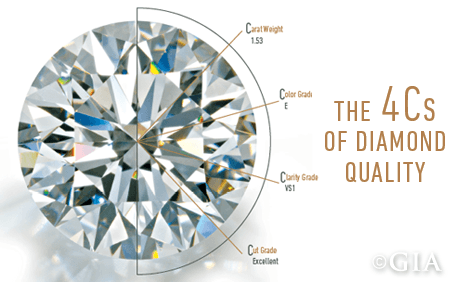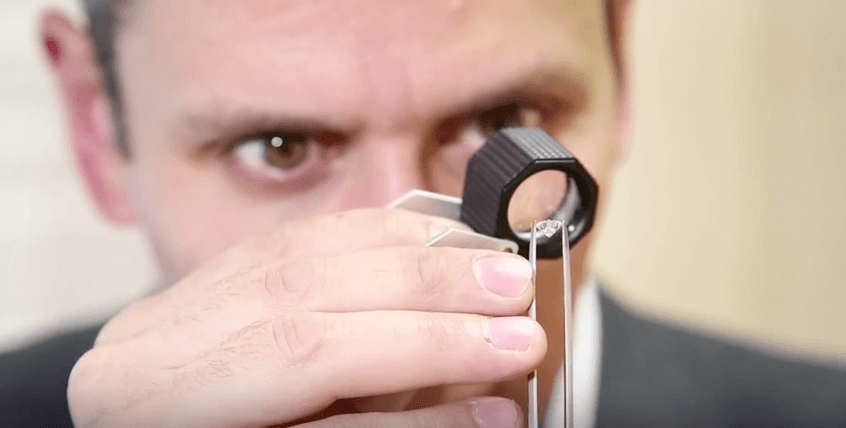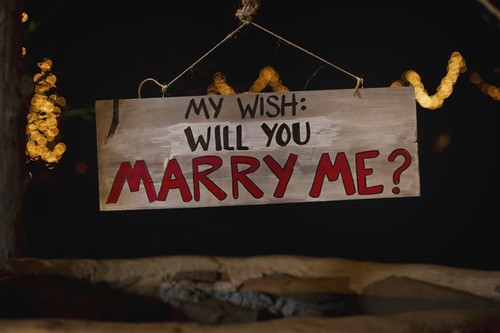
Knowing that buying an engagement ring is likely to be the third highest single purchase most people make, behind a car and a home, it's crucial that we understand the 4C's of diamond grading before deciding which stone to buy.
It wasn't all that long ago that diamonds themselves became universally accepted and used as tokens of love. After all we've only been mining diamonds for around 100 years and it's only since the late 1940's that diamonds themselves were suggested as the main stone with which to propose. Before then people used all kinds of different gemstones as their centre piece and decorated them with perhaps very small diamonds around the edging. Thanks to a masterpiece of marketing and advertising by DeBeers in 1947 where it was declared worldwide that "A diamond is forever", we now use them as the main focus point when getting engaged. How much you should spend is down to you. I don't necessarily believe in three months salary, and I would never suggest you take out a loan to buy an engagement ring. You certainly don't want to start off life together in debt. Have a read through one of my previous blogs I wrote about the history of diamonds for more details on this.
Understanding the 4C's is the first step to understanding diamonds, it is however not the complete picture. Have you ever tried to buy diamonds on the stock market? Well you can't. Have you noticed that you can buy anything else, such as gold, orange juice and even a football club, but you can't buy diamonds. There is a reason for this and I'm going to share it with you.
You see it's estimated that there are around 16,000 different varieties of diamonds based on their shapes, sizes and characteristics, and it would be impossible to keep a live market on all of these. Plus the fact that a "vs2" on one diamond will look completely different from a "vs2" on another diamond, depending on where the inclusion is located. My first bit of advice is to not buy online, regardless of the price, but to view the diamond in person before buying.
However, let's not get ahead of ourselves, nobody is buying anything until we understand the basics of the 4C's. So let's begin the education.
As you can see from the image above, kindly supplied by the GIA, the four C's are broken down as follows. The carat, colour, clarity and cut.
Cut - This is probably the most important, and most challenging, of the 'Four Cs' to understand. In the first instance it can refer to the shape of the diamond you desire, however, the brilliance of a diamond depends heavily on its cut. I prefer to carry only the better grades of diamond cut, to ensure that your jewellery is as beautiful as possible. Below shows you how to select a diamond with the best cut. You don't want a stone that's either too shallow or to deep. You need to ensure the proportions are correct and this is often stated in the diamond report.
Clarity - Most diamonds contain some inner flaws, or inclusions, that occur during the formation process. The visibility, number and size of these inclusions determine what is called the clarity of a diamond. Diamonds that are clear create more brilliance, and thus are more highly prized, and priced. As a guide I would say that most people will have inclusions in their diamond, however it's the size of the infusions which matter. Any diamond which is graded as "vs" shouldn't have any illusions which the naked eye can see. I recommend either a VS2 or SI1 as a starting point for a good "eye clean" clarity.
Colour - Colourless diamonds are traditionally considered the most desirable since they allow the most refraction of light (sparkle). Off white diamonds absorb light, inhibiting brilliance. To ensure that your jewellery is of the highest quality, I tend to pre-select a variety of diamonds to eliminate those of lesser colour grades. I tend to recommend that when picking a colour for your ring, you go for a colour grade between F and G. It's so subjective though and the truth is you won't see the difference once you have your ring on as you will never have two stones next to each other to compare. Also the price difference can be considerable between colours. Make sure you can see the difference and don't just do what your friends have done. It's your stone to enjoy forever.
Carat - A carat is the unit of weight by which a diamond is measured. Because large diamonds are found less commonly than small diamonds, the price of a diamond rises per carat the bigger you go. That's to say that, for example, a one carat diamond could be £5,000 per carat, but the same quality two carat diamond will most certainly be more than £10,000 per carat. It's a curved graph the diamond prices are on. The bigger the stone, the rarer it is, the more expensive per carat the diamond is.
I do believe that you should always buy a diamond with a certificate and preferably from someone who is a member of the London Diamond Bourse. For more information on this, or any related matter, or if you would like to make an appointment, please do feel free to contact me.
If you would like an appointment, then please do call for a free consultation in our central London Hatton Garden office and we would be glad to try and help you. Our details are on the main page of the Lewis Malka London website.
Lewis Malka is a recognised expert in making diamond rings as well as being a famous jeweller to the stars. All his blogs are his own opinions. He is a member of the London Diamond Bourse (LDB) and also sits on the board within the Diamond Bourse. You can follow him daily on Facebook, Twitter and Instagram. If you would like any bespoke jewellery made, then please visit his website.












